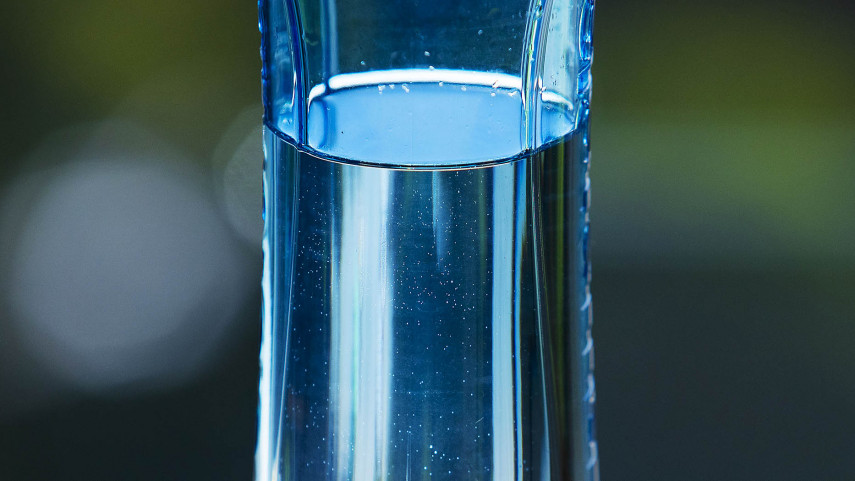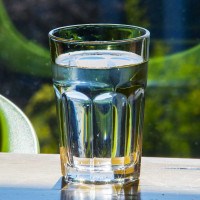Got questions about chlorination?
Share this story
Here are the answers to some of the questions you might have about the Council's decision to temporarily treat the city's water supply.
- Why is there chlorine in Christchurch’s drinking water?
- When will the chlorine finally come out?
- How much of the city is being treated with chlorine?
- What does the chlorine do?
- How safe is it?
- What is the Council doing to prepare for the new drinking water regulations?
- Why is the Council now upgrading other parts of its network?
- What’s the problem with our reservoirs and suction tanks, and what’s being done about it?
- What’s ‘backflow’?
- Have the upgrades to the well heads been a good investment?
- Is the water safe to drink in the meantime?
- Has chlorine been used in Christchurch’s water supply previously?
- Can I have a bath, wash vegies and do the dishes with chlorinated water?
- Is chlorinated water safe for people with health issues and those on dialysis?
- I don’t want chlorinated water. Is there anything I can do?
- What are the Drinking Water Standards?
- What if I have a skin condition or sensitivity to chlorine?
- What about my pet fish?
- Do you use chlorine, or chloramine (chloramine is more toxic to fish)?
- Will chlorination increase the release of lead from brass fittings, and will it change the frequency of replacement of sacrificial anodes in hot-water cylinders?
- Does chlorine cause cancer?
1. Why is there chlorine in Christchurch’s drinking water?
Chlorine is being used on a temporary and targeted basis to address any unacceptable risks of bacterial contamination. Such contamination could enter the network through poor-condition infrastructure – including well heads, reservoirs and suction tanks – or by ‘backflow’ through customer connections without proper backflow prevention.
Some of the well heads that sit on top on the groundwater wells servicing our city are not deemed secure, as there is a potential risk of contamination occurring through them.
For groundwater supplies to be secure under the Ministry of Health’s new framework for assessing contamination risks, well heads must be impermeable so that surface and groundwater can’t get in. Most of our below-ground well heads did not meet that standard, so we have been working since early 2018 to upgrade them.
At the same time, we are working to improve other areas of the network which now need to be brought up to a higher standard. This fast-tracked work includes improving the security of the network’s reservoirs and suction tanks, and working with businesses to prevent possible backflow from commercial and industrial sites.

Christchurch's drinking water is being temporarily treated with chlorine.
2. When will the chlorine finally come out?
This depends on the outcome of the review of our new Water Safety Plan, which was submitted to the Drinking Water Assessor at the end of September 2019. The review is expected to be completed before the end of this year. It also depends on how quickly we can do the work needed to reduce the risks of contamination of our reservoirs and suction tanks, and from backflow from commercial and industrial properties.
We know residents are looking forward to having the chlorine removed and we are working as fast as we can to demonstrate to health officials that we can provide safe drinking water without the need for permanent chorine treatment.
3. How much of the city is being treated with chlorine?
Currently about 30 per cent of the city is chlorine free, with the remainder on the lowest chlorine dose since treatment began last year (0.2 parts per million).
More detailed information about water chlorination in Christchurch is available on our online map: ccc.govt.nz/WaterChlorination
It kills the bacteria that can get into water supplies and spread disease, helping ensure supplies are safe to drink.
Chlorine has been used safely all around the world for about 120 years. It keeps millions of people all over the globe – including in most of New Zealand – safe from waterborne illness.
6. What is the Council doing to prepare for the new drinking water regulations?
Safe, chlorine-free drinking water is a major priority for the Council and for the people of Christchurch. The Council has resolved that, long term, it wants to retain the city's untreated water supply system and will seek an exemption from any Government moves to impose mandatory residual chlorination.
The work we are doing to upgrade our water supply network is best practice and will future-proof the network for Christchurch for many years to come.
7. Why is the Council now upgrading other parts of its network?
As part of our revised Water Safety Plan submitted to the Drinking Water Assessor in September 2019, we needed to complete a thorough risk assessment of all parts of our water supply network. The Ministry of Health’s criteria for these risk assessments has changed since we completed our previous assessment last year, and there is now a much lower tolerance for risk. As a result, we are working to bring some other parts of the network up to a higher standard. Our intention is to prove we can provide safe drinking water without the need for permanent chlorine treatment.
8. What’s the problem with our reservoirs and suction tanks, and what’s being done about it?
There’s a risk of contamination in some of our reservoirs and suction tanks due to animals potentially getting into tanks through unprotected vents, overflows or open hatches, and due to cracks in some structures potentially allowing contaminated water to enter.
The work we’re undertaking is to install hatch alarms where these are absent, and to repair poor-condition roofs, hatches and seals, and to make sure we have mesh in place over vents and overflows.
We carry out regular assessments of all of our reservoirs and suction tanks and undertake any upgrades needed to bring them up to standard.
Backflow is one of the biggest risks to our water supply and happens when water flows backward from a customer’s property into the network. This can happen when pressure drops in the network and causes water (and potentially contaminants) to be sucked or pushed back into the public water supply.
To prevent backflow, property owners with a high or medium backflow risk are required to install, maintain and annually test an appropriate backflow prevention device. For more information, please see: https://ccc.govt.nz/services/water-and-drainage/water-supply/connections/backflow-prevention
10. Have the upgrades to the well heads been a good investment?
Yes, it is very important work that needs to be completed to improve the security of our water supply. The work we are doing is best practice and will future-proof the network for Christchurch for many years to come. It also has other benefits as our new above ground well heads are much easier to access for ongoing maintenance.
11. Is the water safe to drink in the meantime?
Yes, tap water is still safe for people and pets to drink. The quality of the groundwater remains excellent and we test it daily to ensure it is free of bacterial contaminants.
12. Has chlorine been used in Christchurch’s water supply previously?
Yes – intermittently. We put chlorine in the water immediately after the Canterbury earthquakes. We also use it when bacterial transgressions are detected.
13. Can I have a bath, wash vegies and do the dishes with chlorinated water?
Yes. There is no need to make any changes to how you use water.
14. Is chlorinated water safe for people with health issues and those on dialysis?
There are no known health impacts from drinking water effectively treated with chlorine. The use of filters will mitigate any risks for those on dialysis.
15. I don’t want chlorinated water. Is there anything I can do?
Chlorine and any associated by-products can be removed by using a granular activated carbon (GAC) filter. For fish tanks, sodium thiosulfate can be added at the prescribed dosage.
16. What are the Drinking Water Standards?
The Drinking Water Standards for New Zealand are issued by the Ministry of Health under the Health Act and set out the requirements water suppliers need to meet to provide safe water to their communities. The standards specify:
- Maximum amounts of substances, organisms, contaminants and residues that may be present in drinking water.
- Criteria for demonstrating compliance with standards.
- Remedial action to be taken in the event of non-compliance with standards.
17. What if I have a skin condition or sensitivity to chlorine?
Chlorine can be an irritant for existing skin conditions such as asthma or eczema. If you feel your skin getting dry or itchy, use moisturiser after having a shower or bath. If you notice increased skin irritation, asthma symptoms or other symptoms, seek medical advice from your GP. To minimise exposure to chlorine, try bathing at times of low water demand – in the middle of day on weekdays, early in the morning (before 7.30am), or late in the evening (after 9.30pm).
In Canterbury, you can call you usual GP’s number after hours and your call will be put through to a nurse who can provide free health advice. You can also contact Healthline any time for free health advice on 0800 611 116.
If you have fish in outside ponds you will need to either turn down in-coming water to an absolute trickle (this dilutes the chlorine level to a safe amount for your fish), or fill up drums of water and let them sit for at least 24 hours before using (the UV light from the sun evaporates chlorine). For fish tanks or bowls inside, fill up a container of water, let it sit for at least 24 hours and then only replace 1/3 of this water at a time with what is in the tank already. If you’re still worried, you can buy de-chlorinating kits (sodium thiosulfate) at pet supply stores. Water treated with chlorine is safe for other pets such as cats and dogs.
19. Do you use chlorine, or chloramine (chloramine is more toxic to fish)?
We use chlorine.
20. Will chlorination increase the release of lead from brass fittings, and will it change the frequency of replacement of sacrificial anodes in hot-water cylinders?
21. Does chlorine cause cancer?
The International Agency for Cancer Research (IARC) does not believe chlorinated water is either a probable, or even possible, cause of cancer.
Chlorine has been used safely all over the world for around 120 years. It keeps millions of people all round the world – including most of New Zealand – safe from waterborne illness.
The Journal of the National Cancer Institute acknowledges that “water chlorination is one of the major disease prevention achievements of the 20th century”, and that it “has become the principal means of effectively reducing waterborne enteric diseases”, which the World Health Organisation has stated account for a significant number of deaths every year, even in developed countries.
If you have any unanswered questions about the water chlorination, you can email them to watersupply@ccc.govt.nz.
Please note these questions and answers have been updated since they were originally published in July 2018.


